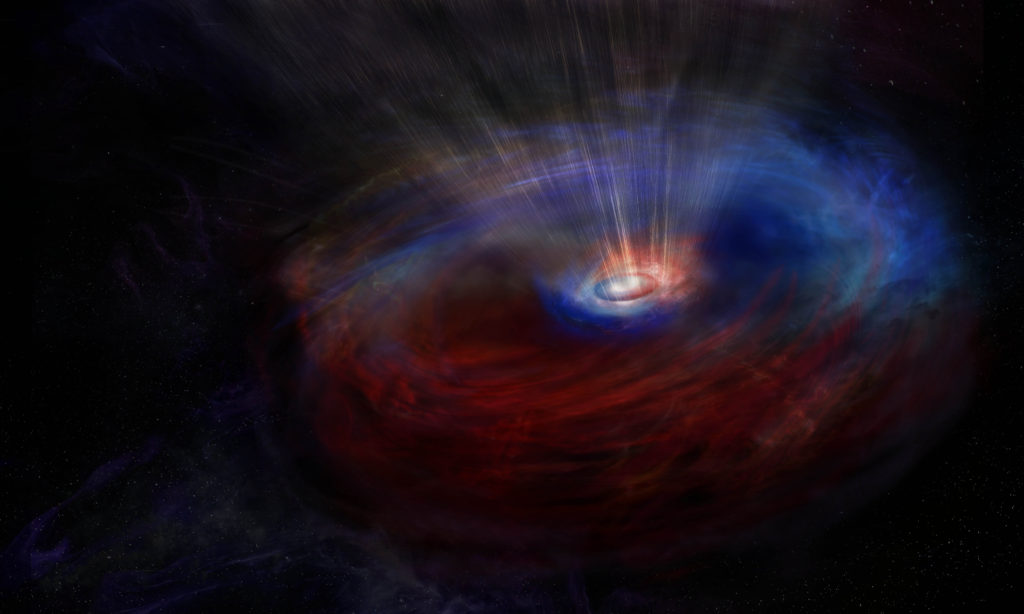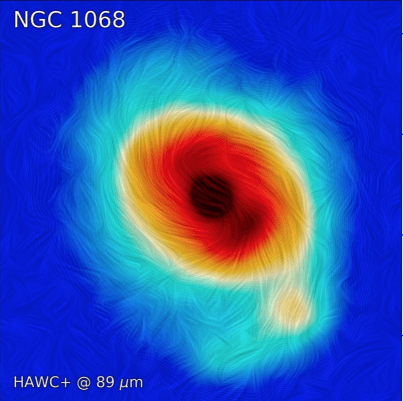ALMA | NRAO | NAOJ | ESO | 2019 Oct 15
At the center of a galaxy called NGC 1068, a supermassive black hole hides within a thick doughnut-shaped cloud of dust and gas. When astronomers used the Atacama Large Millimeter/submillimeter Array (ALMA)
- Artist impression of the heart of galaxy NGC 1068, which harbors an actively feeding supermassive black hole, hidden within a thick doughnut-shaped cloud of dust and gas. ALMA discovered two counter-rotating flows of gas around the black hole. The colors in this image represent the motion of the gas: blue is material moving toward us, red is moving away. Credit: NRAO/AUI/NSF, S. Dagnello
to study this cloud in more detail, they made an unexpected discovery that could explain why supermassive black holes grew so rapidly in the early Universe.
“Thanks to the spectacular resolution of ALMA, we measured the movement of gas in the inner orbits around the black hole,” explains Violette Impellizzeri ... “Surprisingly, we found two disks of gas rotating in opposite directions.”
Supermassive black holes already existed when the Universe was young – just a billion years after the Big Bang. But how these extreme objects, whose masses are up to billions of times the mass of the Sun, had time to grow in such a relatively short timespan, is an outstanding question among astronomers. This new ALMA discovery could provide a clue. “Counter-rotating gas streams are unstable, which means that clouds fall into the black hole faster than they do in a disk with a single rotation direction,” said Impellizzeri. “This could be a way in which a black hole can grow rapidly.”
NGC 1068 (also known as Messier 77) is a spiral galaxy approximately 47 million light-years from Earth in the direction of the constellation Cetus. At its center is an active galactic nucleus, a supermassive black hole that is actively feeding itself from a thin, rotating disk of gas and dust, also known as an accretion disk.
Previous ALMA observations revealed that the black hole is not only gulping down material, but also spewing out gas at incredibly high speeds – up to 500 kilometers per second (more than one million miles per hour). This gas that gets expelled from the accretion disk likely contributes to hiding the region around the black hole from optical telescopes. ...
Counter-Rotation and High Velocity Outflow in the Parsec-Scale
Molecular Torus of NGC 1068 ~ C. M. Violette Impellizzeri et al
- Astrophysical Journal Letters 884(2):L28 (2019 Oct 20) DOI: 10.3847/2041-8213/ab3c64
- arXiv.org > astro-ph > arXiv:1908.07981 > 21 Aug 2019 (v1), 23 Aug 2019 (v2)
viewtopic.php?t=36377

